Complete Guide to Activewear Fabric by the Yard
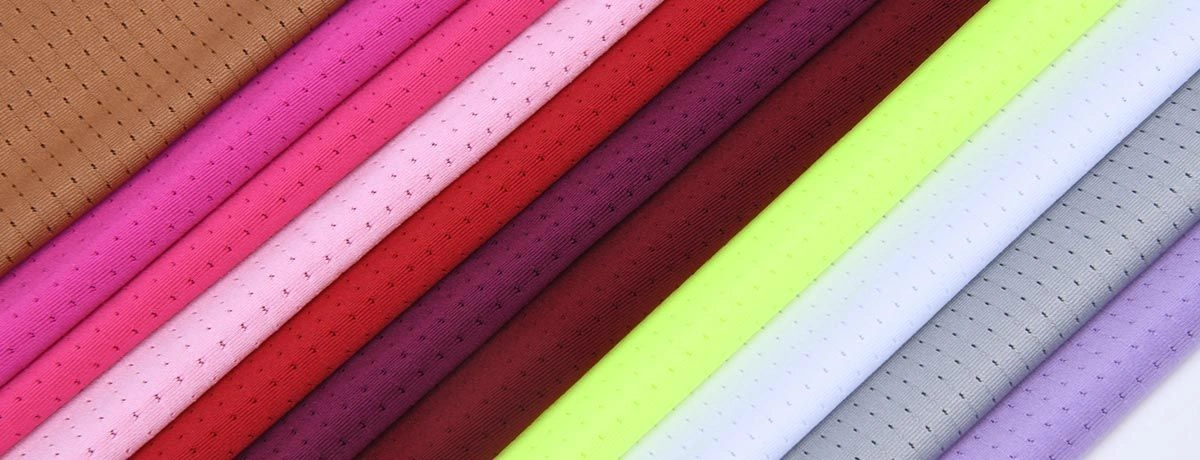
Manufacturing high-performance athletic wear requires selecting the right fabric foundation. Whether you produce team uniforms, gym wear, or custom sportswear, understanding activewear fabrics enables you to create products that meet demanding performance standards. This guide examines essential athletic fabrics available by the yard, focusing on dryfit properties and sublimation printing compatibility for manufacturers seeking reliable textile solutions. This guide is tailored for both new and established brands looking to develop or expand their activewear lines. Activewear fabrics are available in a variety of styles and can accommodate vibrant prints, making it easy for brands to showcase their unique identity.
The activewear industry demands fabrics that withstand intense physical activity while maintaining comfort and durability. Having fabrics in stock is crucial for quick turnaround and efficient production, allowing manufacturers to respond rapidly to market needs. Modern athletic fabric technology centers on moisture management, temperature regulation, and structural integrity. Activewear fabrics are suitable for both casual and intense workouts, offering versatility for everyday wear as well as high-impact training. For manufacturers, these specifications directly impact product performance, customer satisfaction, and brand reputation.
Dryfit technology represents a significant advancement in athletic material engineering. These fabrics feature specialized fiber construction that moves moisture away from the skin to the fabric surface, where it evaporates quickly. You can absolutely rely on these fabrics for consistent quality and performance. This process keeps athletes dry and comfortable during extended physical activity. Additionally, sublimation printing compatibility allows manufacturers to apply vibrant, long-lasting designs without compromising fabric performance.
Please note: Certain fabrics or colors may be discontinued or have limited availability, so always check current stock before finalizing your selection.
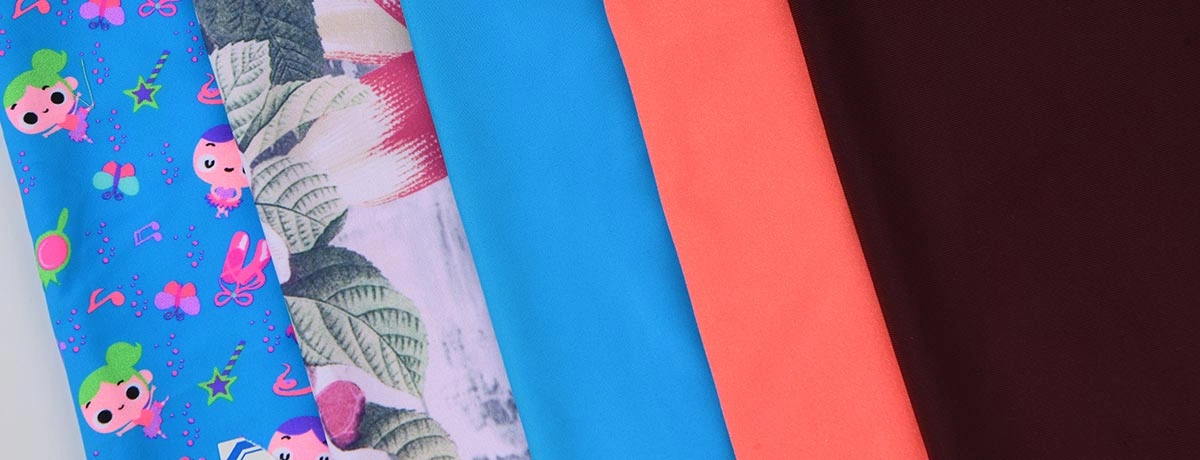 Introduction to Active Apparel
Introduction to Active Apparel
Active apparel, commonly known as activewear, is specifically engineered to support athletic and recreational pursuits. The foundation of any high-performing activewear lies in the careful selection of activewear fabrics, which directly influence the comfort, durability, and overall performance of the clothing. When choosing activewear material for your production line or activewear sewing projects, it’s crucial to consider how the fabric manages moisture, regulates temperature, and provides the necessary stretch for a full range of motion during workouts. The right fabrics can make a significant difference, whether your customers are engaging in high intensity workouts, yoga, or everyday fitness routines. This guide will help you navigate the diverse world of activewear fabrics, outlining their unique benefits and guiding you toward the ideal choices for your next collection.
Types of Activewear Fabrics
Polyester Athletic Fabric
Polyester dominates the athletic clothing fabric market due to its exceptional moisture-wicking properties and durability. This synthetic fiber creates lightweight, quick-drying garments that resist wrinkles and maintain shape after repeated washing. Polyester blended with spandex or other fibers offers enhanced performance characteristics, combining the base fiber’s strengths with complementary materials. A mix of polyester and other fibers can further improve moisture-wicking, durability, and overall comfort in activewear.
Modern polyester athletic fabric incorporates microfiber technology, creating ultra-fine threads that improve breathability and comfort. The fabric’s hydrophobic nature naturally repels moisture, making it ideal for intense workout applications. Polyester is especially suitable for vibrant prints through sublimation printing, providing excellent dye absorption and resulting in permanent, colorful graphics.
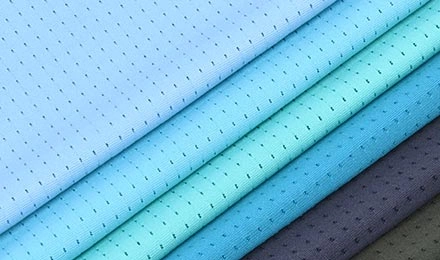
Spandex and Elastane Blends
Athletic knit fabric commonly incorporates spandex or elastane to provide exceptional stretch and recovery properties. These elastic fibers, typically comprising 5-20% of the fabric composition, enable four-way stretch that accommodates athletic movement. Spandex is often blended with other fibers such as polyester, nylon, or other performance fibers to achieve the desired balance of stretch, support, and durability. Spandex-blended fabrics are especially stretchy, making them ideal for garments like yoga pants and other activewear designed for flexibility and comfort. This makes them particularly suitable for activities such as pilates, where unrestricted movement and comfort are essential.
Spandex integration requires careful consideration during manufacturing. The elastic properties must balance comfort with compression, supporting muscles without restricting circulation. High-quality spandex maintains elasticity through multiple wash cycles, ensuring long-term garment performance.
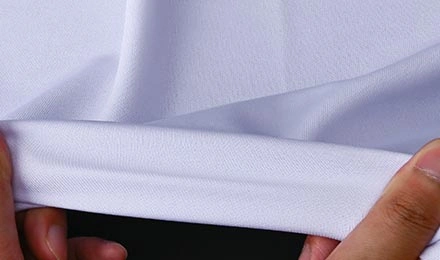
Nylon Athletic Material
Nylon offers superior strength and abrasion resistance, making it valuable for high-impact athletic applications. This synthetic fiber is often blended with spandex or polyester to enhance stretch, moisture-wicking, and overall performance. Nylon creates smooth, lightweight fabrics with excellent recovery properties. Certain nylon fabrics can also provide insulating qualities, helping to retain warmth and regulate temperature in cooler environments. Nylon athletic material excels in applications requiring durability, such as compression garments and protective gear.
The fiber’s quick-drying properties complement moisture-wicking treatments, creating fabrics that perform effectively in humid conditions. Nylon’s dyeability supports various coloration methods, though sublimation printing may require specialized treatments for optimal results.
Merino Wool Performance Fabrics
Natural merino wool is an insulating fabric that provides unique temperature regulation properties, helping to retain warmth and maintain comfort across varying conditions. Unlike traditional wool, merino fibers offer softness and moisture-wicking capabilities that compete with synthetic alternatives. The natural antimicrobial properties reduce odor retention, extending garment freshness. Merino wool is also ideal for casual activewear, as its comfort and breathability make it suitable for relaxed, everyday wear and low-intensity activities.
Merino wool athletic fabric requires specialized care during manufacturing and end-use. The natural fibers demand gentle processing techniques but reward careful handling with exceptional comfort and performance characteristics.
Temperature Regulating Fabrics
Temperature regulating fabrics are essential for athletes and fitness enthusiasts who demand comfort and performance in any climate. These advanced fabrics are designed to keep the wearer cool during intense activity and warm when temperatures drop, making them a top choice for high intensity activities such as running, cycling, and yoga. Moisture wicking and breathable properties are at the core of these fabrics, ensuring sweat is quickly drawn away from the skin and evaporated, while allowing air to circulate freely. Popular temperature regulating materials include blends of polyester, nylon, and spandex, which offer a balance of stretch, softness, and durability. These fabrics are commonly found in sports bras, leggings, and tracksuits, providing the flexibility and support needed for dynamic movement. When selecting temperature regulating fabrics, consider their ability to maintain comfort across a range of conditions, as well as their resilience to frequent washing and wear.
Benefits and Performance Characteristics
Moisture-Wicking Technology
Effective moisture management forms the foundation of athletic fabric performance. Moisture-wicking fabrics utilize capillary action to transport perspiration away from the skin surface. The fabric's structure features hydrophobic interior surfaces that repel moisture and hydrophilic exterior surfaces that facilitate evaporation.
Advanced moisture-wicking treatments create permanent chemical modifications to fiber surfaces, ensuring consistent performance throughout the garment's lifespan. These treatments resist degradation from washing and wear, maintaining effectiveness even after extensive use.
Breathability and Air Circulation
Athletic wear fabrics must facilitate air circulation to prevent overheating during physical activity. Breathable fabrics feature open knit structures or specialized weaves that promote airflow while maintaining structural integrity. The balance between breathability and durability requires careful engineering during fabric development.
Mesh panels and ventilation zones can enhance overall garment breathability without compromising core fabric performance. These design elements allow manufacturers to optimize comfort for specific athletic applications.
Durability and Longevity
Athletic clothing fabric must withstand repeated stress, washing, and wear while maintaining performance characteristics. High-quality fabrics resist pilling, fading, and structural degradation through hundreds of use cycles. Durability testing protocols evaluate fabric performance under simulated athletic conditions.
Proper fiber selection and fabric construction techniques directly impact longevity. Investment in premium athletic material yields products that maintain performance standards throughout extended use periods, supporting brand reputation and customer satisfaction.
Purchasing Activewear Fabric by the Yard
Quality Assessment Criteria
Evaluating fabric quality requires examining multiple performance parameters. Fabric weight, commonly expressed in grams per square meter (GSM), serves as an indicator of its density and durability. Higher GSM values generally correlate with increased durability but may reduce breathability.
Stretch recovery testing demonstrates the fabric's ability to return to original dimensions after stretching. High-quality athletic fabric maintains shape integrity through repeated stress cycles. Colorfastness testing ensures designs remain vibrant through washing and UV exposure.
Certification Standards
Reputable fabric suppliers provide certifications verifying performance claims and safety standards. OEKO-TEX Standard 100 certification confirms the absence of harmful substances, while performance certifications validate moisture-wicking and antimicrobial properties.
Bluesign certification indicates sustainable manufacturing practices and chemical safety protocols. These certifications provide assurance of product quality and regulatory compliance for manufacturers serving diverse markets.
Sublimation Printing Compatibility
Sublimation printing requires fabrics with specific polyester content and treatment characteristics. This process enables the creation of vibrant prints on activewear fabrics, allowing for colorful, detailed designs that stand out. The fabric must accept sublimation dyes and withstand the high temperatures involved in the printing process. Proper preparation and testing ensure optimal print quality and durability.
Pre-testing small fabric samples prevents costly production errors and ensures consistent results across large production runs. The substrate preparation process may require specialized treatments to optimize dye absorption and color vibrancy.
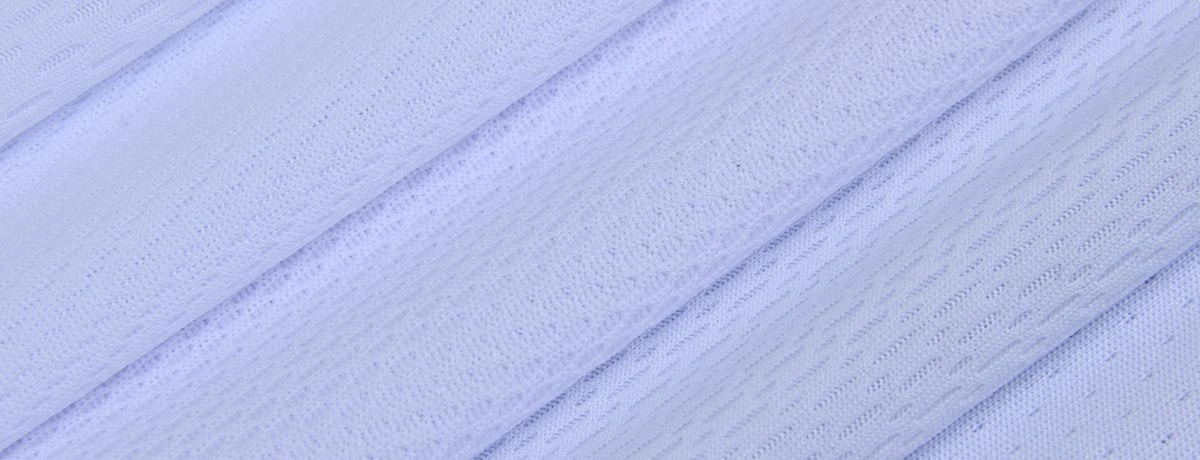
Online Shopping for Fabrics
With the rise of digital sourcing, online shopping for fabrics has become a convenient solution for manufacturers and designers working on activewear sewing projects. When browsing online, it’s important to evaluate the fabric selection offered by each supplier, ensuring access to a wide range of breathable, soft, and durable materials suitable for activewear. Pay close attention to quality indicators and minimum order requirements, as these can impact both your production process and budget. Many reputable online retailers provide fabric sampling and testing services, allowing you to assess the material’s suitability before committing to a larger purchase. Additionally, consider the supplier’s reputation, customer service responsiveness, and return policies to ensure a smooth and reliable sourcing experience. By prioritizing these factors, you can confidently select the best fabrics for your activewear needs.
Fabric Sampling and Testing
Before finalizing your fabric selection for activewear sewing projects, fabric sampling and testing are essential steps to guarantee optimal performance. Sampling gives you the opportunity to physically compare different fabrics, assessing their texture, stretch, and overall feel. Testing goes a step further, allowing you to evaluate key performance attributes such as moisture wicking, breathability, durability, and support. It’s important to test how the fabric responds to movement, compression, and temperature regulation, ensuring it meets the demands of your intended application. By thoroughly sampling and testing fabrics, you can make informed decisions that enhance the quality and functionality of your activewear, resulting in garments that deliver superior comfort and performance.
Manufacturing Considerations for Athletic Wear
Cutting and Sewing Techniques
Athletic fabric behavior during manufacturing requires specialized techniques and equipment. To sew stretchy activewear fabrics, it is important to use specific methods and tools that accommodate the fabric's flexibility. Stretch fabrics demand careful cutting to maintain grain line integrity and prevent distortion. Sharp rotary cutters and appropriate cutting surfaces ensure clean edges that resist fraying.
Sewing equipment must accommodate fabric stretch without creating puckering or thread breaks. Ballpoint needles and stretch threads prevent fabric damage during construction. Proper machine tension settings ensure consistent stitch quality across varying fabric weights. For more information and essential tips on sewing and textiles, check out this beginner's guide.
Pattern Development
Athletic wear patterns must account for fabric stretch and recovery properties. The amount of ease built into patterns directly affects garment fit and performance. Compression garments require negative ease calculations that consider both fabric properties and intended compression levels.
Pattern testing with the selected fabric validates fit assumptions and identifies potential construction issues. This process prevents costly production errors and ensures consistent sizing across production runs.
Caring for Activewear
Proper care is vital to preserving the performance and longevity of activewear fabrics. To maintain moisture wicking properties and overall fabric integrity, always wash activewear in cold water using mild detergents, avoiding harsh chemicals or bleach that can degrade the material. High heat from dryers can cause shrinkage and damage, so it’s best to air dry or use a low-heat setting. Store activewear in a cool, dry place away from direct sunlight to prevent fading and maintain fabric elasticity. By following these care guidelines, you ensure that your activewear remains soft, breathable, and high-performing, supporting athletes and active individuals through countless workouts.
Sustainability in Athletic Fabric Production
Recycled Fiber Integration
Sustainable athletic fabric options increasingly incorporate recycled polyester from post-consumer plastic bottles or textile waste. These recycled fibers offer performance characteristics comparable to virgin materials while reducing environmental impact.
Quality recycled athletic material maintains moisture-wicking and durability standards while supporting circular economy principles. Proper certification ensures recycled content claims and environmental benefits.
Eco-Friendly Manufacturing Processes
Sustainable fabric production utilizes water-efficient dyeing processes and renewable energy sources. These practices reduce environmental impact without compromising fabric performance or quality standards.
Manufacturers seeking sustainable options should evaluate supplier environmental practices and certifications. Comprehensive sustainability programs address the entire supply chain, from raw material sourcing to final product delivery.
Optimizing Your Athletic Wear Production
MH specializes in providing high-quality activewear fabrics for a range of brands, offering comprehensive athletic fabric solutions designed for manufacturers requiring consistent quality and performance. The extensive fabric portfolio includes specialized dryfit materials and sublimation-ready substrates that meet demanding production requirements. MH's solutions are tailored to meet the needs of both emerging and established brands, supporting their product development and brand identity goals.
Professional fabric selection guidance ensures optimal material choices for specific applications, while bulk purchasing options provide cost-effective solutions for large-scale production. Technical support services assist manufacturers in optimizing fabric utilization and achieving superior product outcomes.
For manufacturers ready to elevate their athletic wear production with premium fabric solutions, MH provides the expertise and materials necessary for success. Contact MH today to discuss bulk quantity requirements and discover how the right fabric foundation transforms athletic wear manufacturing capabilities.



